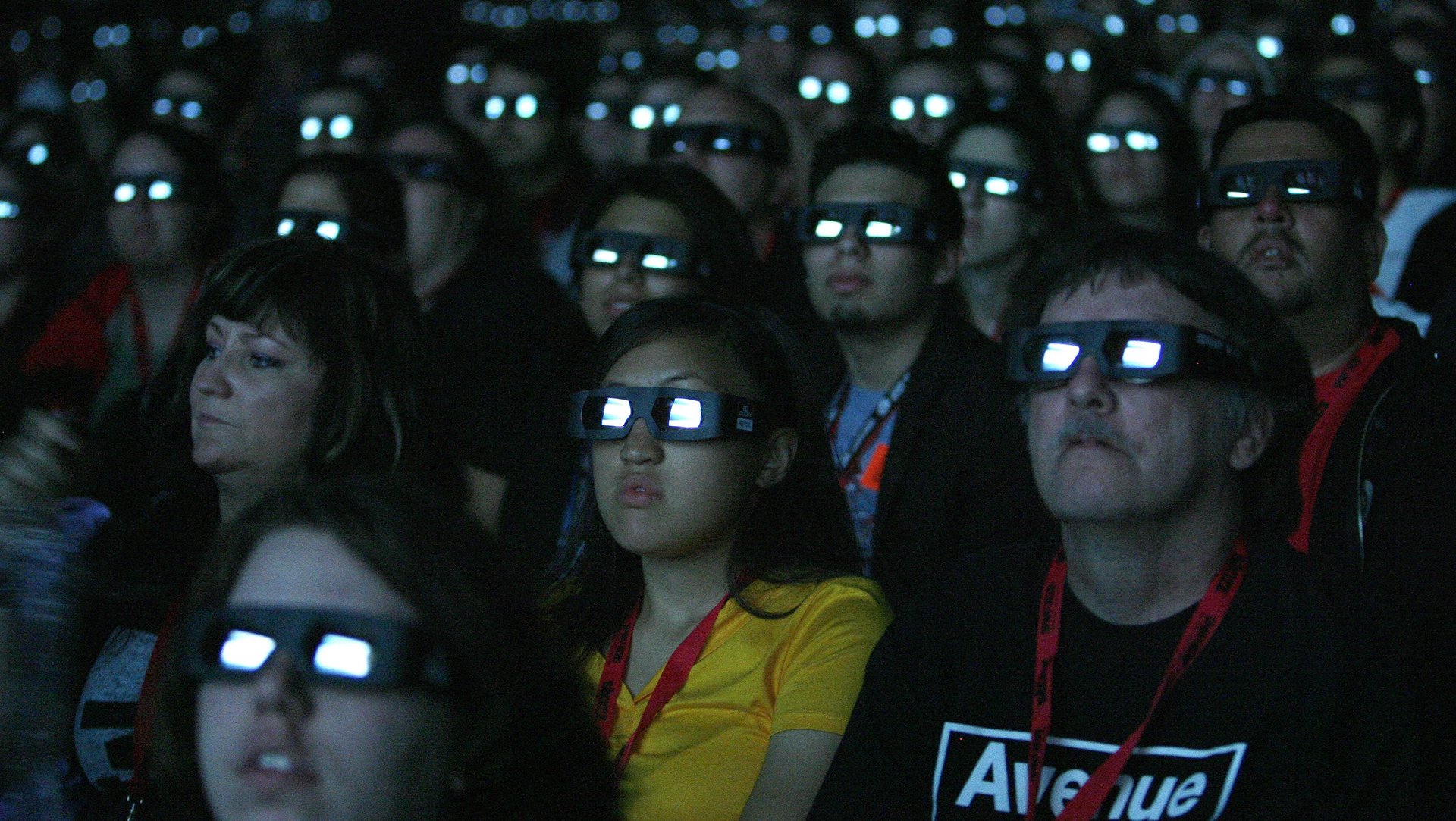Americans are over 3D movies, but Hollywood hasn’t got the memo
Eight years after James Cameron’s Avatar wowed moviegoers with its much-hyped 3D technology, the American 3D movie bubble is deflating.


Eight years after James Cameron’s Avatar wowed moviegoers with its much-hyped 3D technology, the American 3D movie bubble is deflating.
As the film industry makes more and more 3D movies, fewer and fewer Americans are willing to pay the lofty price of admission. The 3D US box office in 2016 was down 8% from 2015, according to an annual report by the Motion Picture Association of America (MPAA). And that’s despite Hollywood releasing 12 more 3D movies than in the year before.
From a box office standpoint, America’s 3D film industry peaked in 2010 and has been in a steady decline since—even as the total number of 3D films released increases.
To put it another way, 3D’s share of the country’s total box office gross dropped to just 14% last year, down from its peak of 21% in 2010. The total US box office, meanwhile, is up almost 8% over that same timeframe.
So why does Hollywood continue to relentlessly beat the 3D drum, even as it’s become clear Americans are quickly losing interest in the format? The answer is simple: Asia—and China specifically—still love 3D.
In the US and Canada, 3D screens make up about 39% of all digital movie screens. In Asia Pacific, however, 3D screens compose a whopping 78% of screens. 3D may be a gimmick in the United States, but it’s the default in many Asian countries.
The total global box office has grown 44% since 2012, largely due to increases in the amount of screens and films available in China, Japan, and India. And Chinese audiences, most of all, love 3D. As of 2015, China’s 3D market was worth more than $1 billion more than all of North America’s.
When Jurassic World came out that year, 3D was responsible for a modest 48% of all of the film’s box office gross in the United States. In China? A full 95% of the film’s gross came from 3D showings. Studios have started to release 3D versions of some big films exclusively in China, knowing there’s an audience that will eat them up.
Hollywood has clearly capitalized on a huge opportunity in China. But that hasn’t stopped the film industry from continuing to push the 3D format onto Americans audiences, who seem to have just about had it with putting on the goofy, uncomfortable glasses and risking vertigo.